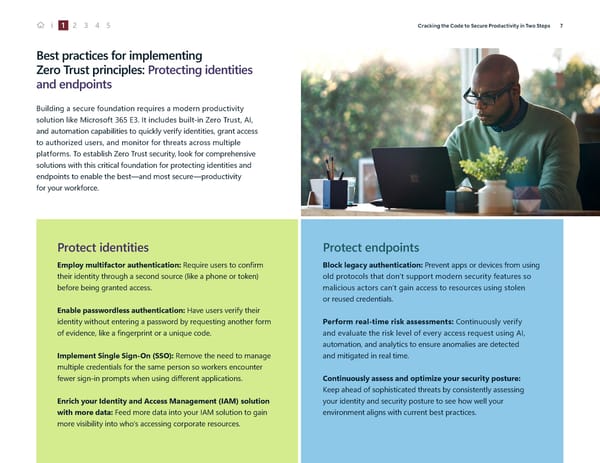i 1 2 3 4 5 Cracking the Code to Secure Productivity in Two Steps 7 Best practices for implementing Zero Trust principles: Protecting identities and endpoints Building a secure foundation requires a modern productivity solution like Microsoft 365 E3. It includes built-in Zero Trust, AI, and automation capabilities to quickly verify identities, grant access to authorized users, and monitor for threats across multiple platforms. To establish Zero Trust security, look for comprehensive solutions with this critical foundation for protecting identities and endpoints to enable the best—and most secure—productivity for your workforce. Protect identities Protect endpoints Employ multifactor authentication: Require users to confirm Block legacy authentication: Prevent apps or devices from using their identity through a second source (like a phone or token) old protocols that don’t support modern security features so before being granted access. malicious actors can’t gain access to resources using stolen or reused credentials. Enable passwordless authentication: Have users verify their identity without entering a password by requesting another form Perform real-time risk assessments: Continuously verify of evidence, like a fingerprint or a unique code. and evaluate the risk level of every access request using AI, automation, and analytics to ensure anomalies are detected Implement Single Sign-On (SSO): Remove the need to manage and mitigated in real time. multiple credentials for the same person so workers encounter fewer sign-in prompts when using different applications. Continuously assess and optimize your security posture: Keep ahead of sophisticated threats by consistently assessing Enrich your Identity and Access Management (IAM) solution your identity and security posture to see how well your with more data: Feed more data into your IAM solution to gain environment aligns with current best practices. more visibility into who’s accessing corporate resources.
 Cracking the code to secure productivity Page 6 Page 8
Cracking the code to secure productivity Page 6 Page 8